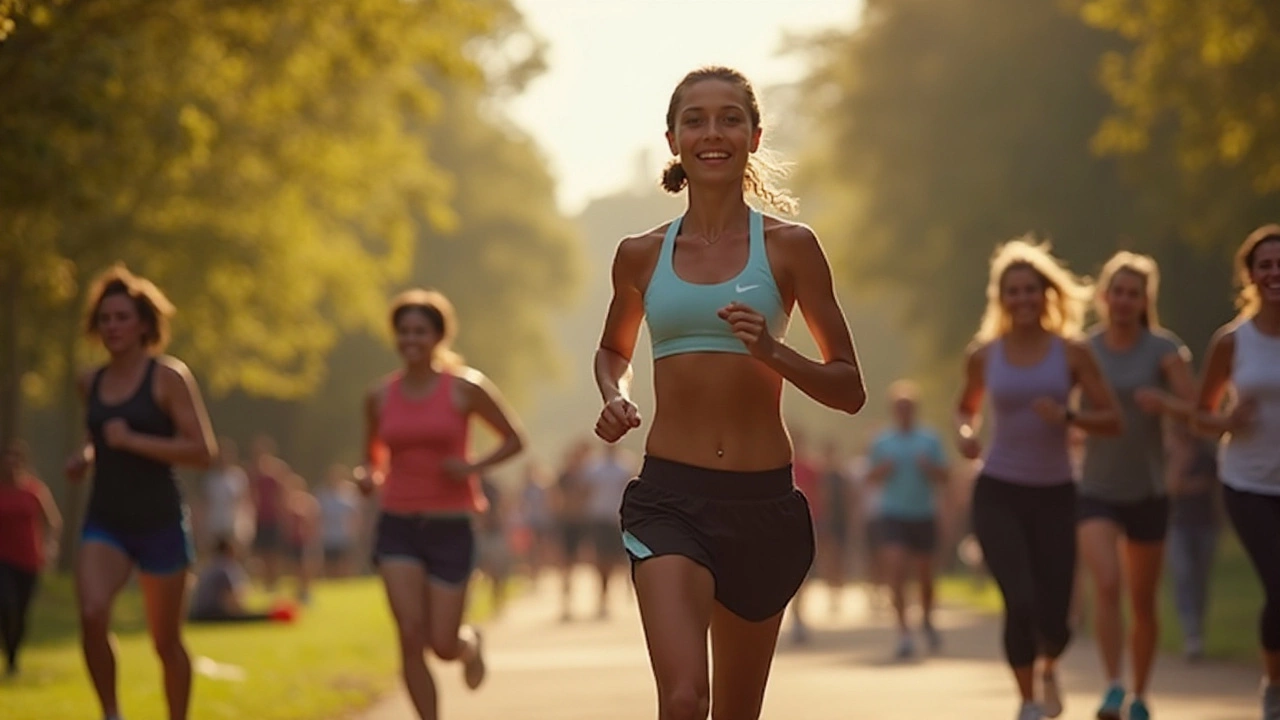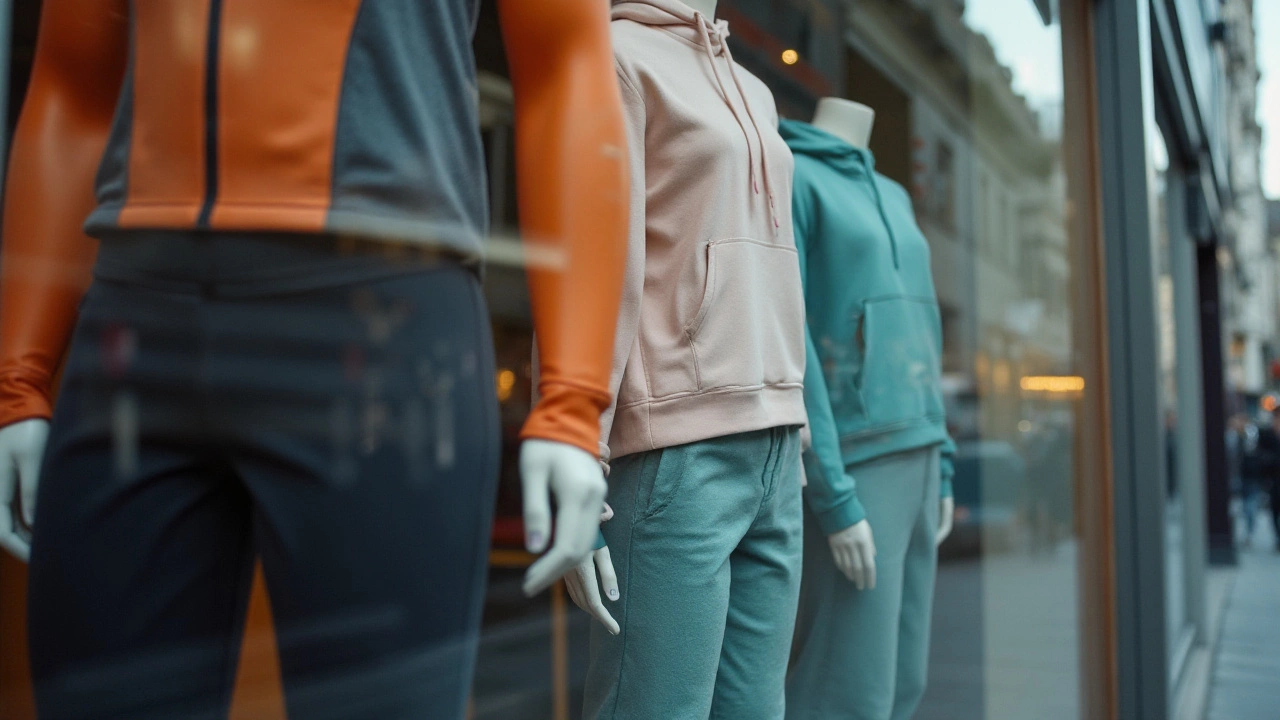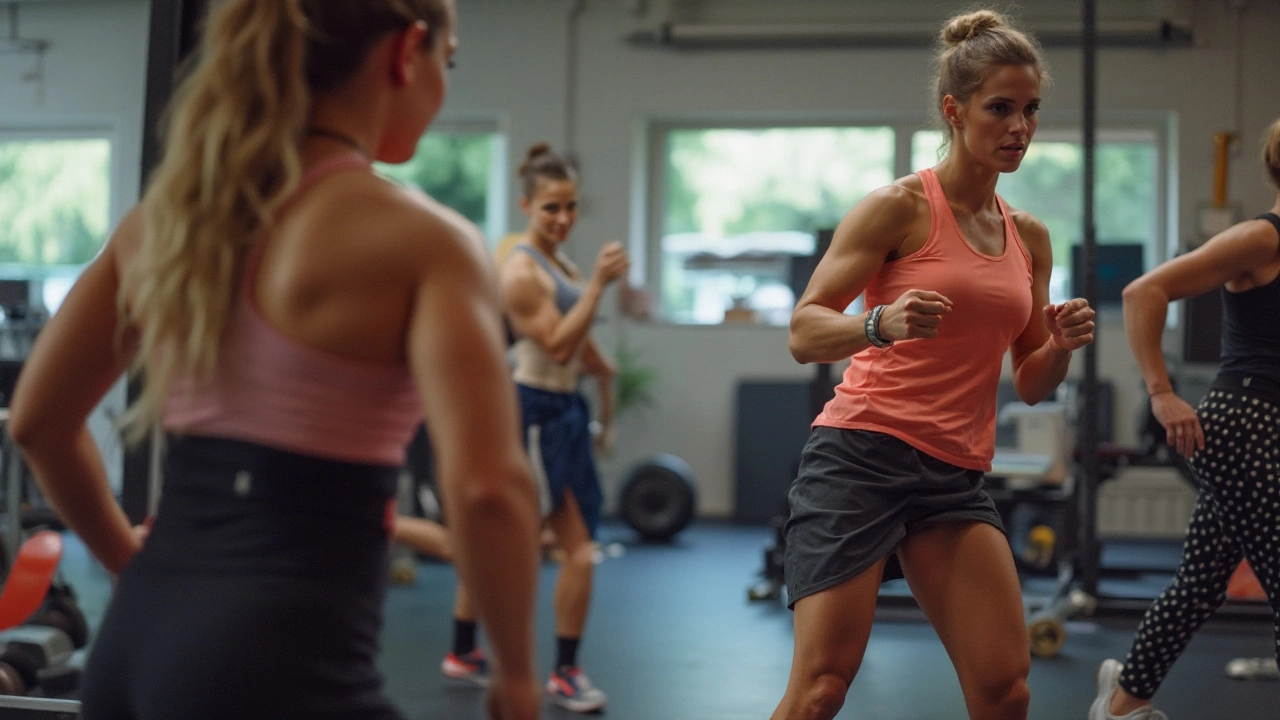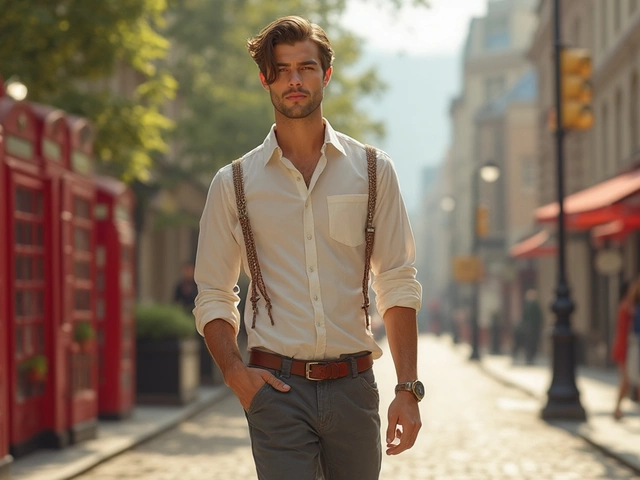Understanding the Distinctions Between Activewear and Athleisure

- Cleo Fairchild
- 7 January 2025
- 0 Comments
Diving into the world of sportswear, one encounters terms like activewear and athleisure quite commonly these days. Despite being tossed around interchangeably, these two categories serve distinct purposes and cater to different lifestyles.
Activewear is constructed with specific physical activities in mind, crafted to enhance performance and provide comfort during workouts. Meanwhile, athleisure is a blend that merges function with style, often used for activities requiring less strenuous effort, serving more as a lifestyle statement.
Recognizing these differences can make a huge impact on how you shop and wear these pieces, ensuring that every garment serves its purpose, whether you’re breaking a sweat or enjoying a brunch outing with friends.
- Defining Activewear
- Understanding Athleisure
- Materials and Design Differences
- Functional Considerations
- Choosing the Right Fit for Your Lifestyle
Defining Activewear
Many people wonder what exactly sets activewear apart in the vast landscape of fitness apparel. At its core, activewear is the ultimate in functionality when it comes to clothing designed for physical exertion. Think of it as the Hercules of your wardrobe: each piece is engineered to support you through challenging workouts, whether you're lifting weights, cycling, or running marathon distances. The design and construction focus heavily on comfort, support, and performance-enhancing elements. Fabrics used in activewear often include high-stretch materials like spandex blends, moisture-wicking synthetics, and breathable mesh panels to keep the wearer cool, dry, and unrestricted in motion.
The look and feel of activewear are engineered to withstand the test of time and intense physical activity. For high-performance scenarios such as marathons or HIIT classes, manufacturers craft these garments to promote optimum blood flow and reduce muscle fatigue. According to research by the Global Fashion Agenda, the market for performance fabrics is expected to grow by 10% annually as more individuals focus on high-intensity training.
"Activewear is no longer just about function—it’s now a status symbol that communicates a commitment to health and well-being," says Michelle McDonald, a known fashion analyst. She believes that even brands outside traditional sporting labels are churning out activewear lines to meet skyrocketing demand.
Each garment is more than just aesthetically pleasing. Anyone familiar with gym culture knows the importance of proper gear. Imagine conquering your exercise regimen without fear of overstretching a seam or being impeded by heavy, sweat-soaked cotton. Innovations like athleisure-inspired laser-cut designs in leggings or anti-odour technology in shirts bolster the activewear appeal. Not just practical for exercise, they are often stylish enough to wear outside the gym, albeit primarily still catering to function.
Technology in Activewear
It's intriguing to examine innovations such as smart fabrics that adapt to the body’s temperature and sweat levels or features like UV protection for outdoor enthusiasts. Recent surveys from 2023 indicate that more than 60% of fitness enthusiasts prefer garments with integrated technological features, offering better experiences both outside and inside gym walls. Major brands like Nike and Under Armour are constantly vying for a technological edge, incorporating fitness trackers and data-integrated wearables into their lines.
- Moisture-Wicking: Absorbs sweat.
- Breathability: Prevents overheating.
- Compression: Enhances circulation.
- Durability: Withstands wear and tear.
- Flexibility: Supports a wide range of motion.
Looking ahead, as technologies continue to evolve, activewear may see significant advancements, offering even more personalized support and comfort for fitness aficionados. As the wearables market expands further, the synergy between fashion, technology, and lifestyle becomes evident, showing that activewear is as dynamic as the athletes who wear it.
Understanding Athleisure
Athleisure has become a defining style choice for many individuals who crave comfort without compromising on style. The term itself is a blend of 'athletic' and 'leisure,' signaling its dual purpose in providing both functionality and fashion. This apparel segment took root in the mid-2010s, escalating its influence as fitness-conscious lifestyles gained prevalence. Unlike **activewear**, which is solely dedicated to performance, athleisure pieces are designed to transition seamlessly from gym to café, making it a versatile choice for the modern wearer.
What makes athleisure distinct is its emphasis on aesthetic appeal alongside comfort. Consumers are drawn to the innovative materials that promise flexibility and breathability, yet the designs often incorporate trend-driven elements more typical of casual wear. This fusion has led to its growing popularity among urban dwellers and fashion enthusiasts. The integration of **athleisure** into everyday wardrobes speaks volumes about changing perceptions of style. For many, it's not just clothing; it's a lifestyle statement that prioritizes the balance between functionality and fashion.
Taglines like 'comfort is key' resonate deeply with the ethos of athleisure. Within this realm, fabrics play a pivotal role. Athleisure often uses blends like spandex and lycra, which provide stretch and comfort, while still holding shape. This has enabled brands to experiment with tailored looks that feel relaxed yet presentable. Traditionally, sportswear was reserved for sweat-inducing activities, but with athleisure, a yoga pant or a hooded sweatshirt becomes viable for office wear, especially in tech industries. This shift underscores the appeal for adaptable, fashion-forward clothes that don't command a stark lifestyle shift.
The push for sustainability has also influenced this trend. Many brands are experimenting with recycled fibers and dyeing processes to offer eco-friendly athleisure options. For instance, some companies have committed to using materials made from ocean waste, aligning with environmentally conscious consumer values. A fascinating survey showcased by GlobalData highlighted that approximately 70% of millennials prefer brands that align with sustainable practices. This illustrates athleisure's potential to lead the charge for fashion that is both ethically conscious and chic.
Some industry experts stress the significance of innovation in keeping athleisure relevant. According to a spokesperson from Lululemon, known for their pioneering role, "Our designs are crafted not only for the athlete in all of us, but for versatile, everyday wear that withstands the test of city life. Our aim is to serve both function and style seamlessly." This duality is what allows athleisure to flourish. It's about the freedom to move from a workout session to a meeting without missing a beat, encapsulating a level of convenience that resonates with today's fast-paced lifestyle.

Materials and Design Differences
Understanding the intricacies of activewear and athleisure begins with exploring the materials and design approaches behind each category. Activewear is about high-performance materials engineered to withstand intense physical activities. These include moisture-wicking fabrics like polyester and elastane that are designed to keep your body dry during heavy workouts. Breathable mesh panels often make an appearance, providing strategic ventilation to prevent overheating. Stretchy yet durable, these materials are often characterized by their ability to allow a full range of motion without sacrificing resilience.
Activewear often incorporates seamless technology, reducing chafing and discomfort, which is especially significant for endurance activities like running or cycling. Reputable brands invest heavily in researching and developing textiles that support muscle compression, providing benefits such as improved circulation and reduced fatigue. This meticulous attention to performance details underlines the core function of activewear: to enhance athletic output.
In contrast, athleisure emphasizes comfort and aesthetics. This doesn't mean that functionality is ignored, but the priority shifts to style and versatility. Cotton blends, bamboo, and natural fibers become more prevalent, offering softness and comfort for all-day wear. Designs tend to be more relaxed but retain an athletic influence, often characterized by elastic waistbands, gentle fits, and mellow tones that can transition from yoga class to a casual dinner effortlessly. The design of athleisure garments is deeply rooted in creating a harmonious balance between put-together elegance and the coziness that people gravitate towards in their everyday wardrobes.
Even the color palettes diverge; activewear may favor bold and bright colors to invigorate workouts, whereas athleisure might lean towards neutral shades that easily integrate into a broader variety of settings. A notable figure in the fashion industry once said,
"Athleisure thrives in adaptability. It's where function meets personal expression."This quote captures the essence of athleisure's appeal, transcending traditional gym attire boundaries. While activewear can optimize your gym session, athleisure offers the flexibility to go from the office to a social gathering without missing a beat.
Moreover, innovations in sustainable materials have emerged across both categories. Some companies are experimenting with recycled textiles, enhancing both activewear and athleisure with eco-friendly options. This reflects growing consumer awareness and demand for sustainability in fashion. An interesting fact to note is how manufacturers use recycled ocean plastic for sports bras or shoes, representing strides toward a more sustainable future. As activewear and athleisure continue to evolve, these ecological considerations may play a pivotal role in shaping their future direction.
In essence, whether you seek the performance edge of activewear or the adaptable comfort of athleisure, understanding these materials and design elements equips you with the knowledge to choose pieces that align seamlessly with your lifestyle needs.
Functional Considerations
When choosing between activewear and athleisure, it's essential to consider the functional aspects that each offers. Activewear, by design, focuses primarily on function and performance. These garments are designed to enhance athletic performance, allowing maximum range of motion and incorporating features like moisture-wicking fabrics that keep sweat at bay. This is crucial for maintaining comfort during prolonged exercise sessions. For instance, activewear leggings often include compression fabrics which can aid in muscle recovery and enhance circulation, a detail not usually found in athleisure pieces.
Athleisure, however, centers more on comfort and style, although it does borrow elements from activewear. This means that while athleisure pieces look sporty and may even be inspired by workout gear, they do not necessarily optimize for actual fitness activities. The materials might be softer and more comfortable for casual, all-day wear, sacrificing some of the technical qualities such as breathability or stretch. In many cases, athleisure items are made from cotton blends or fashion knits which prioritize aesthetic over utility. This makes them ideal for everyday activities like running errands or casual meet-ups but less suitable for high-intensity workouts.
The Balance Between Style and Performance
The choice between these two can often boil down to whether you prioritize style or performance in your wardrobe. Some individuals choose to mix and match, blending athleisure tops with activewear bottoms to maintain a practical balance. As highlighted in a recent survey by Fitness Online, approximately 60% of consumers admitted to opting for athleisure pieces for their daily hikes or walks, citing comfort and versatility as key motivators over hardcore performance needs. This shows a clear demand for apparel that can transition effectively between varying degrees of activity.
For those deeply invested in athletic pursuits, sticking with specialty activewear might be the safer bet. Pieces that are engineered with particular sports in mind, such as running shoes with cushioned support or cycling shorts with built-in padding, provide the specific functions necessary to optimize performance. Some brands, like Nike, have integrated smart fabrics into their lines, which can adapt to body temperature changes, offering both cooling and warming effects as needed.
"We've seen a growing interest in hybrid wear that can easily take you from the yoga studio to coffee shops without missing a beat," notes Emma Gonzales, a fashion analyst at Apparel Insiders. "The key is finding apparel that aligns with personal activity levels and lifestyle needs."
In conclusion, the functional considerations between activewear and athleisure are significant and impact choice greatly. Understanding these differences can help consumers build wardrobes that not only suit their personal style but also their activity levels, ensuring comfort and performance are never compromised.

Choosing the Right Fit for Your Lifestyle
Picking between activewear and athleisure depends heavily on what kind of lifestyle you lead and your daily activities. Those who live a more dynamic, fitness-oriented life might find themselves consistently reaching for true activewear. This type of clothing is designed with performance in mind, often featuring moisture-wicking fabrics and breathable, stretchable materials that allow for a full range of movement. Gyms, tracks, and sports fields are where you’ll see these garments put to their paces, each piece crafted to withstand sweat and rigorous activities.
Conversely, if your day-to-day revolves around moving from meetings to casual meet-ups, and maybe a light yoga class or a stroll in the park, then athleisure could be a perfect fit. This style captures the essence of athletic clothing but with a trendy spin, suitable for wearing outside the gym and even to social events. While not always engineered with high-performance materials, athleisure often uses soft, comfortable fabrics that emphasize style and relaxation.
Comfort and style aren't just preferences; they are a response to the ever-evolving demands of modern life where prioritizing flexibility is key. A report from Allied Market Research stated, "The global athleisure market size was valued at $155.2 billion in 2018, and is projected to reach $257.1 billion by 2026," illustrating the growing appeal of clothing that blends activity with leisure.
Selecting the right fit involves not just knowing your wardrobe's purpose but also being in tune with your personal taste and convenience. Ask yourself, does your clothing need to support a midday sprint, or is it more about transitioning smoothly from a casual office setting to an evening out? Understanding this balance can lead you to build a wardrobe that truly accommodates your needs.
For many, the best solution might be a harmonious blend of both worlds: a wardrobe where some of your clothes handle sweat and repetition, while others handle you lounging magnificently at your favorite coffee shop. To make shopping easier, think about your week's typical rhythm and identify the gaps in functionality or style; this will guide you in incorporating either activewear or athleisure into your fashion lineup, ensuring you're ready for whatever comes your way.
Tips for Choosing Your Wardrobe:
- Consider the primary activities you engage in weekly—do they demand specialized gear?
- Keep in mind climate and seasonality—layering options are useful when the weather is unpredictable.
- Focus on quality over quantity; investing in durable, versatile pieces can save you money in the long run.
- Don't shy away from unique styles and colors that reflect your personality; fashion should be fun, too.


